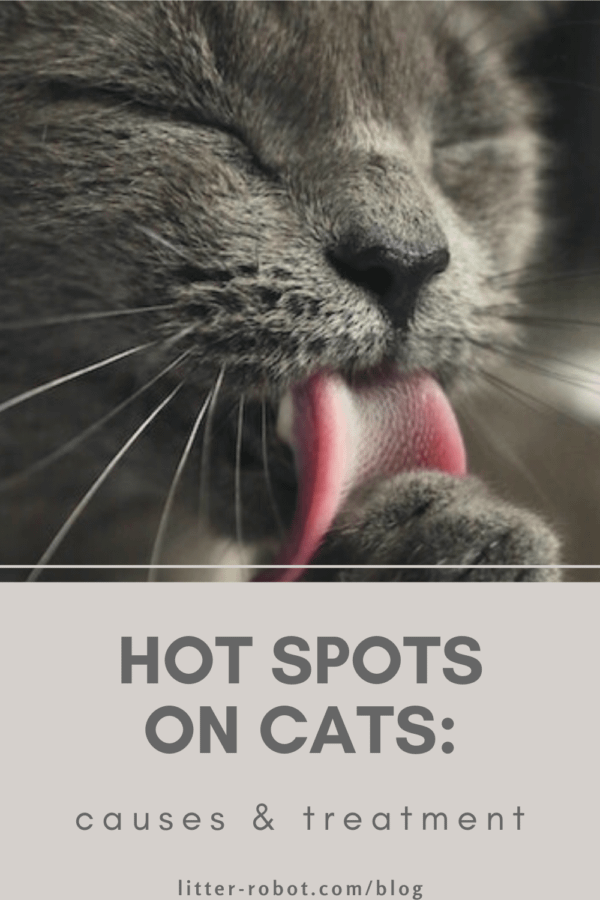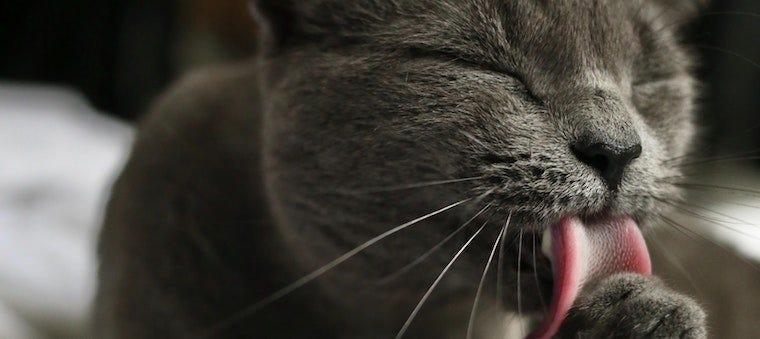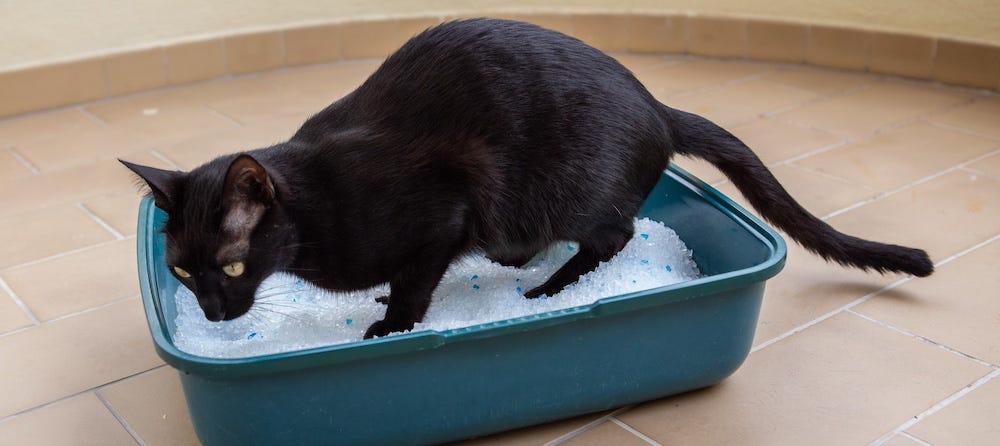If you’ve ever noticed your cat excessively licking or biting at a spot on his body, he may be experiencing hot spots. So what are hot spots on cats? Learn more about this condition characterized by inflamed, infected skin, as well as common causes and how to soothe your kitty’s discomfort.
What are hot spots on cats?
Sometimes referred to as acute moist dermatitis and pyotraumatic dermatitis, hot spots on cats are essentially infected sores. A hot spot begins as a slightly tender area on the body. It becomes more irritated as your cat rubs, licks, or bites it. Eventually the area is red, moist, and inflamed. Finally, your cat’s natural bacteria (or something else, depending on the cause) leads to the inflamed spot becoming a full-blown infected sore.
Signs of hot spots
Hot spots on cats most often appear as round lesions on the head, neck, tail, or thigh. These spots may be oozing fluid or crusted over, and may literally be warm or hot to the touch (hence the name). You’ll likely notice hair loss or discolored fur around hot spots, as well.
If you discover hot spots or similar symptoms on your cat, it’s best to make an appointment with your veterinarian for diagnosis and treatment next steps.
Some cats are more likely to develop hot spots
If you’re wondering how common hot spots on cats are, it helps to understand which kitties may be more likely to develop this irritating skin condition. These include:
- Long-haired cats or cats with dense coats
- Cats with fleas or a history of allergies
- Cats with weakened immune systems
What causes hot spots on cats?
Hot spots are more likely to arise during hot, humid weather, but can occur any time of the year. You will want to visit your veterinarian to help determine why your cat has hot spots. There are some common causes to keep in mind:
- Flea allergies: An allergy to flea saliva is one of the most common causes of hot spots on cats. If your cat has fleas, he may bite, scratch, and overgroom himself to the point of hot spots and hair loss. Less common in cats is an allergy to mites.
- Food and/or environmental allergies: Your cat may be allergic to something in his diet, such as certain grains or beef. Or he may be allergic to something in his environment, such as molds, pollen, cleaning products, polluted water, or even toxic air.
- Ringworm: Cats can carry ringworm on their fur more frequently than dogs, but don’t always show clinical signs from it. Identifying a hot spot vs. ringworm will need to be done at your vet’s office.
- Ear infection: Because ear infections are itchy, your cat may create hot spots scratching around that general area.
- Pain: If your cat has arthritis or is injured, he may lick or bite the site that is causing him discomfort.
- Improper grooming: If your cat has long hair or a dense coat and isn’t grooming himself properly or being brushed regularly, lack of air circulation provides ideal breeding grounds for bacteria—potentially leading to hot spots.
How to treat hot spots on cats
Cat hot spot treatment depends on what’s causing the skin condition. First, your vet will want to diagnose any parasitic, fungal, or ear infections present, as these may require immediate treatment.
Treating the wound(s)
If you are not experienced with more advanced grooming techniques and wound care, we recommend that your vet treat your cat’s infected wounds first; he or she will be able to show you how to properly treat future hot spots on your cat.
Treating your cat’s wounds begins with shaving or clipping the hair around the hot spot—this can be quite painful, which is another reason why it’s best to have a vet’s help. Once the area is clear of fur, topical ointments and/or oral antibiotics may be used to heal the wound. Depending on the severity of the itching, your vet may also give an injection of a steroid and maybe an antibiotic if the sore appears to be infected.
It’s very important to prevent your cat from further licking, scratching, or biting the hot spots while they are healing. This can be achieved with a cone or Elizabethan collar. Cat owners often try to prevent cats from getting to the wounds with the aid of cat booties, socks, or covering the area with some other article of clothing. Be sure to consult with your veterinarian before doing this or immediately afterward to determine if covering the hot spot is the best action or if it may delay healing.
Treating the underlying cause & prevention
If your cat has hot spots caused by fleas, you’ll want to treat him with prescription-strength flea and tick medicine. In fact, it’s a good idea to use external parasite prevention as soon as the temperature warms up above freezing—even if your cat is indoors-only. Ringworm will need to be treated with topical lime sulfur baths, oral antifungal medication, environmental clean-up, and bathing.
Your vet may suspect your cat’s hot spots are caused by some kind of food or environmental allergy. In this case, you may be referred to a veterinary dermatologist for allergy skin testing and immunotherapy, or allergy shots.
Your vet may want to do some tests to determine if your cat is in pain from arthritis—which is chronically undertreated in cats—or another underlying condition.
Finally, make sure you are regularly brushing your cat—especially if he is long-haired! Not only will a grooming routine help cut down on hairballs, it will allow you to more quickly identify if your cat is suffering from hot spots again.
The good news is hot spots on cats are very treatable once the cause is determined. When in doubt, check with your veterinarian if you notice your kitty excessively licking or biting himself or signs of skin lesions.
Sources:
- Dr. Justine Lee, DVM
- Dr. Karen Becker, DVM
- Dr. Jerry Murray, DVM
- Hot Spots (Pyotraumatic Dermatitis) in Dogs and Cats
Cover photo by Milada Vigerova on Unsplash





